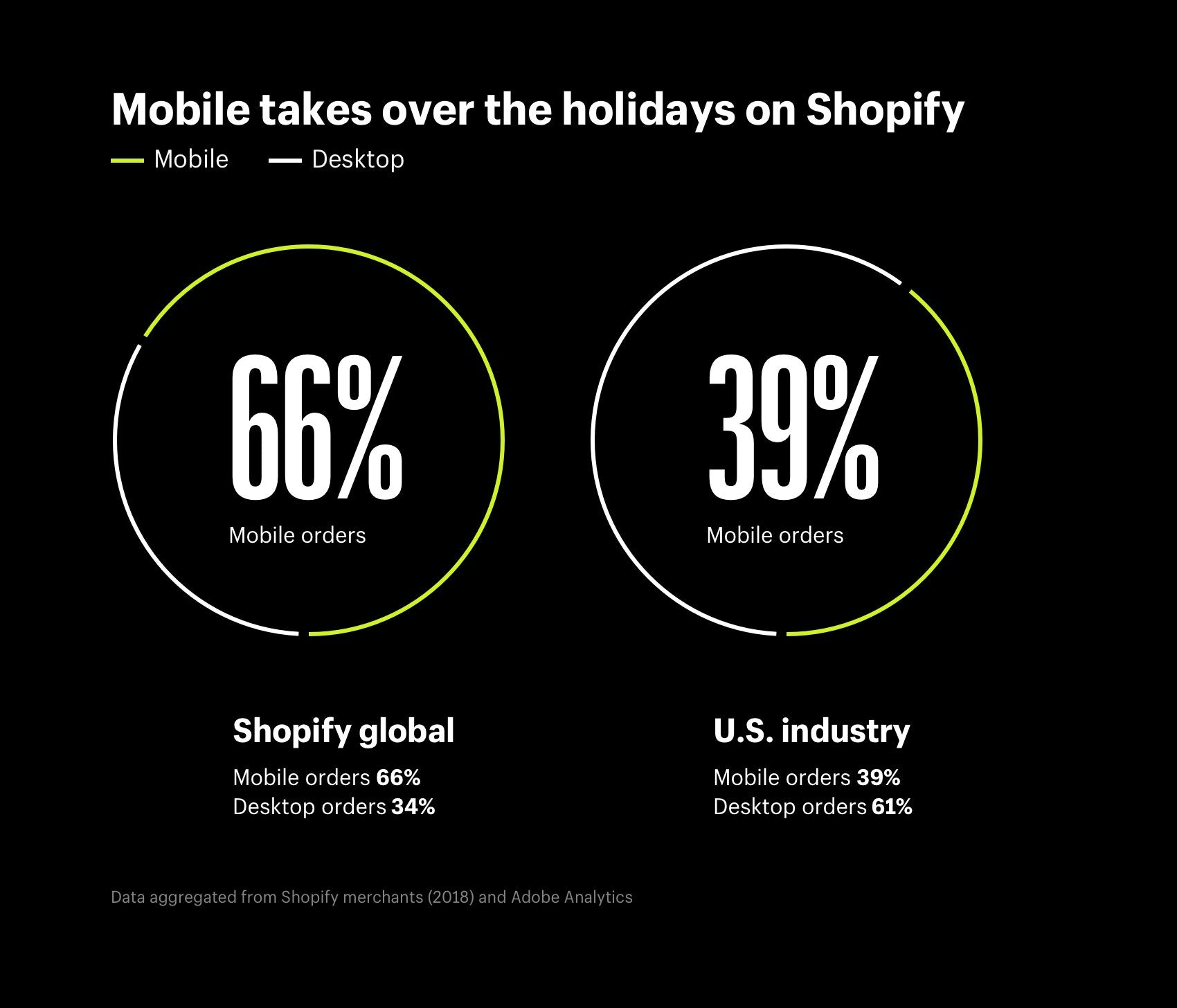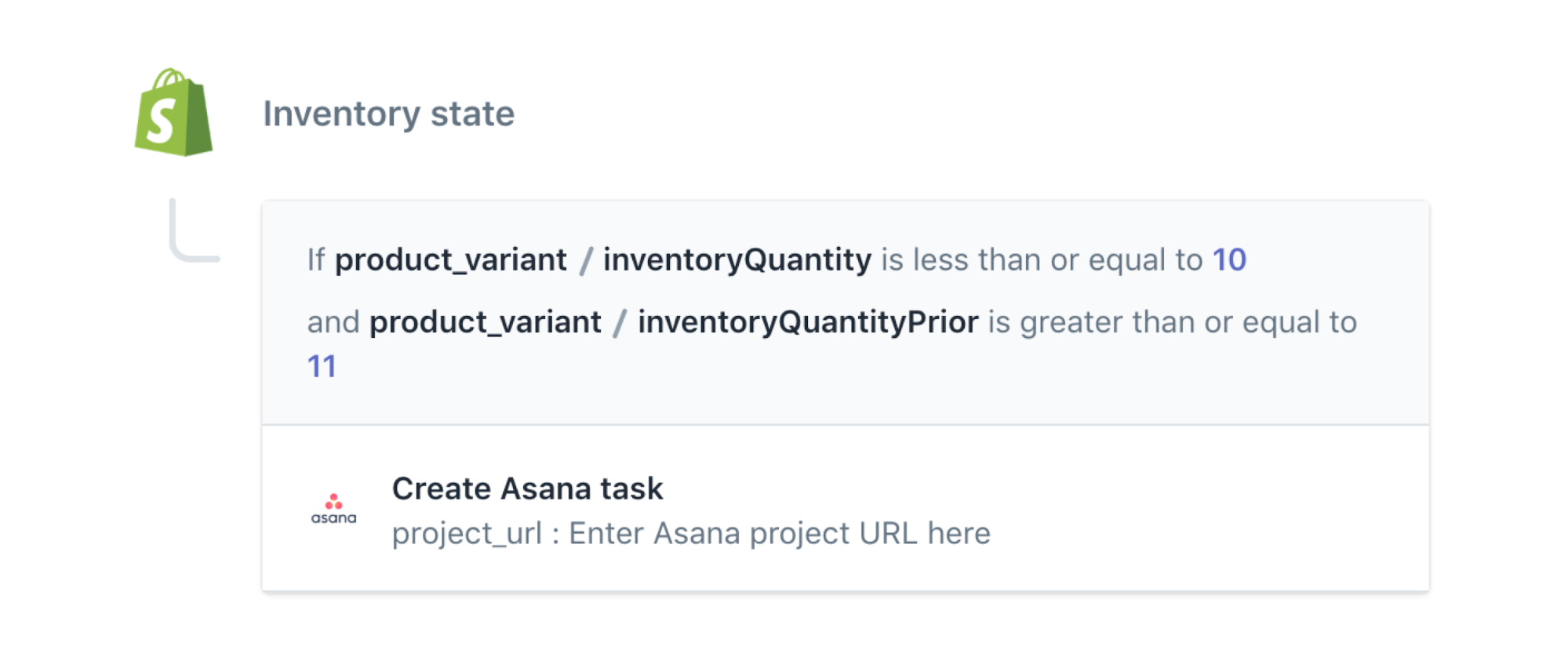Holiday shoppers will soon be rushing to your ecommerce store, cranking up the heat on your website UX and performance.
On Black Friday 2018, Shopify merchants generated 699,923 sales per minute at peak traffic volumes. They also grossed over $855M in sales over the Black Friday Cyber Monday weekend alone.
Optimizing your site for performance and speed during the holiday rush keeps customers happy and converting throughout the season. It also prevents those dreadful crashes.
If your ecommerce site needs a tuneup before Black Friday and Cyber Monday, now is the time to do it. Let’s walk through eight ways to get your site ready for the busiest shopping season of the year.
1. Monitor your site uptime to avoid crashes
Without a reliable platform, holiday seasonal traffic surges can slow or crash an ecommerce site. Business Insider reported that JCrew could have lost upwards of $700,000 over five hours last Black Friday when the site had technical difficulties.
To avoid a similar fate, run tests in advance to ensure your commerce platform can handle the busiest shopping days and times. Pingdom looked at the top 50 ecommerce sites ranked on Alexa and found the average uptime was 99.03%. Furthermore, 32 websites on that list achieved a 99.99% uptime or better.
While short outages did occur, many of those top-ranked sites were never down for more than six minutes at any given time. That’s a good benchmark to work toward over the busy holiday season.
For peace of mind, you can install an uptime monitor like Uptime Robot or Pingdom to be notified if your website experiences some downtime.
2. Speed up your pages for higher conversions on mobile
The number one issue mobile users complain about isn’t site crashes, it’s slow pages.
And small improvements on this can make a huge difference. In fact, a two-second acceleration in page speed can boost your conversions by 66%.
As mobile shopping continues to rise, prioritizing fast page speeds is vital. Over Black Friday and Cyber Monday in 2018, mobile sales were at their highest ever, exceeding desktop sales for retailers on Shopify.

PageSpeed Insights is a Google Labs tool that personalizes suggestions to improve your mobile site performance and speed. Additionally, it calls out elements like CSS and JavaScript that can slow down your site.
Need to convince your boss to optimize now? Using Google’s Test My Site tool, you can calculate how faster site speeds increase your mobile conversion rates. Finally, review these 10 trends to help you optimize your site for a mobile-first experience.
3. Use predictive search to elevate browsing experiences
Your site search functionality and on-site navigation should help customers find what they need quickly and easily. Keep in mind that 80% of visitors will abandon a site because of a poor search experience.
Using predictive search functionality, you can guide and improve how customers search your site. Use a predictive tool that comes with:
- Real-time analytics: This will help you understand trends and performance with unlimited real-time analysis.
- Instant, accurate search results: This will help you retain customers who are almost twice as likely to convert when using site search.
- Storefront customization flexibility: This will allow you to use search as an extension of your brand by controlling overall search styling.
Shopify users can add predictive search to their theme using the Ajax API today.
To optimize your site’s navigation, focus on the header first, as it’s seen by 99.99% of your visitors. Simplicity, colors, and intuitive titles are critical. Your header should include the site’s main navigation, a site search bar, a cart button, and other relevant information like free shipping details, coupon codes, or best-selling items.

Since that space is limited, make data-driven decisions based on Google Analytics or Shopify reports to identify your priorities. For example, if many customers are looking for your store locations, add that to the header.
You can also add a link to live chat if customers are complaining about difficulties reaching your business.
4. Automate holiday sales events to save time
Was your team pulling all-nighters to switch store themes and make sure sales events ran smoothly last holiday season? This year, save their sleep and sanity using an automated promotional tool.
Ecommerce automation can help you schedule, execute, and monitor events such as sales, product releases, inventory restocks, and content changes.
A tool like Shopify’s Launchpad can help free up your time to adjust your strategy and maximize holiday revenue based on real-time results.
5. Streamline your backend workflows to monitor issues
Menial and mundane tasks, like manually tagging VIP customers or flagging high-risk orders, are a reality of any business. During the holidays, they can eat into time that’s better spent responding to customer complaints or improving marketing campaigns.
With a backend automation tool, you can offload that work and set up notifications to alert you to issues, such as fraudulent orders or stockouts during the holidays. No coding knowledge is needed, and you don’t have to guess which automations to create.
Shopify Flow offers many holiday-relevant back-end workflow automation templates to choose from. For example, you can set up a task in an Asana project when a product variant’s inventory drops below a specific threshold. That way you’ll have one view of all your low-stock products so anyone on your team can see it.

The tool also allows you to create a workflow to send an email notification to your logistics team for orders that have paid for expedited shipping, and add a tag for easy organization.

For more information on how Shopify Flow templates work, refer to our overview post.
6. Make the checkout experience quick and painless
Customers will be time-strapped over the holidays as they try to get all their shopping done. Every second you can give back adds another reason for them to love your brand.
One way to do that? Let shoppers skip the cart and checkout without leaving a product page they’re browsing.
Shopify’s dynamic checkout buttons serve up a customer’s preferred and trusted payment method through an accelerated checkout processright on a product page.
Additionally, they help you capture purchase intent much sooner, while personalizing the checkout experience. Customers still have the option to check out the traditional way and add additional items to their carts.

You can offer customers branded and unbranded dynamic checkout buttons:
- Unbranded buttons include a “Buy it now” CTA that takes customers directly to checkout to complete the payment process.
- Branded buttons offer a “Buy with [Payment Method]” and show the logo for third-party checkout methods like Google Pay, Apple Pay, or PayPal.
7. Create automatic discounts to reduce buyer friction
Discounts applied automatically to a customer’s cart, without the need to memorize a promo code, make purchasing much easier.
Make sure your commerce platform offers a fast, flexible promotions tool using fixed, percentage, or buy-X-get-Y discounts to streamline the checkout process.

Shopify’s new automatic discounts feature helps you:
- Increase conversions: Discounts are automatically shown in a user’s cart and at checkout.
- Customize discounts with ease by adding a minimum purchase amount or quantity of items: Set conditions to only apply the discount to specific collections or products.
- Compliment Shopify Scripts: Experiment and test your promotions with automatic discounts. Then create a more complex, personalized experience with Shopify Scripts.
8. Boost security to stop fraudulent orders
Fraudsters and hackers will be targeting vulnerable sites over the holidays. To take maximum security measures this holiday season, make sure your site is Level 1 PCI DSS compliant. The term stands for Payment Card Industry Data Security Standard (PCI DSS). It’s a proprietary information security standard for all organizations that store, process or transmit branded credit cards including Visa, MasterCard, American Express, Discover, and JCB.
Find out if your commerce platform provider handles this on your behalf. Otherwise, the onus is on you to follow the steps to become PCI compliant.
Additionally, manage the risk of losing money due to fraudulent orders. Last year, Shape Security discovered upwards of 80-90% of log-in traffic to retail ecommerce sites was fraudulent. That percentage is higher than in all other sectors.
Stop fraud in its tracks with an automation tool like Shopify Flow. Use a Flow template to save you money and time spent looking for fraudulent orders.
Once you add it to your store, you’ll receive emails prompting a review of high-risk orders before capturing payment. To do so, you must have payments set to manual capture.

Prepare your ecommerce site before the holiday rush
By avoiding site slowdowns and crashes, helping customers find what they need, and letting them check out quickly on their mobile devices, your sales will skyrocket this holiday season.
You can save your team time by automating front- and back-end workflows. Your customers will also thank you for making their experience easy and fast.
Need more tips to maximize your ecommerce site success this holiday season? Learn how to win the ecommerce holidays with a strong customer acquisition strategy.
Read more
- The Science of Ecommerce Eye Tracking: Your 2017 ‘Vision’ Shouldn’t Be Your Own
- 21 Ecommerce Personalization Examples & 7 Scalable Tactics
- What is 3PL: How to Select a Third-Party Logistics Partner
- What Is a Warehouse Management System? Definition and Software Review
- How to Choose An Enterprise Ecommerce Platform
- What is Headless Commerce: A Complete Guide for 2022
- What are the retail trends for 2023?
- Wholesale Ecommerce: What is It and How to Start?
- Omnichannel vs Multichannel: What is the Difference and Why Does It Matter?
- Ultimate Flash Sale Ecommerce Guide: How to Sell Over $3 Billion on Autopilot


